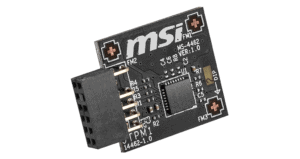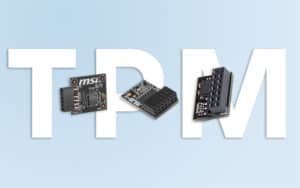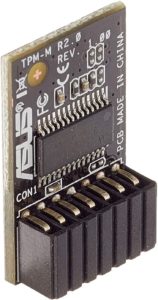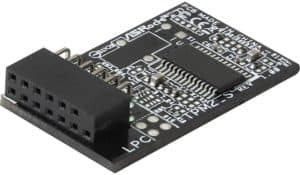Best TPM 2.0 Modules for Windows 11 in 2025

Table of Contents
With the entire internet in a tizzy over the new revelation that a TPM – Trusted Platform Module – is going to be required for Windows 11, we’ve gone full-on with explaining the situation and also what they actually are.
So with the need for security being upped by Microsoft, just what are the best TPMs for your system?
Usually, on PCGuide, there’s a specific answer, an ‘editors choice’ and such, but with TPMs it’s generally best to go with your specific brand of motherboard’s own TPM. Simplicity is the best policy when it comes to adding to your darling machine.
Most chips fit the slots designed for them on the boards, so going out of your way to try and put a circle in a square hole is not going to help anyone. There are some cases of older motherboards supporting different chips, like this Gigabyte board from 2011 supporting an ASUS chip due to the same pinouts.
In that article the Gigabyte boards are specifically designed to house Gigabyte TPMs – if they have them on at all – so your mileage will vary unless you want a grotesque cable mess hanging out the side of your motherboard. That or a chip having to be sent back.
What to avoid?
A thread on Superuser.com has pointed out that you want to avoid being lured into TPMs that are FW3.19 based, as these are 1.2 compatible, which Microsoft have changed their minds on last minute as being usable. Make sure you check the product page specifications section if you can.
Products at a Glance
How We Picked
Most chips fit the slots designed for them on the boards, so going out of your way to try and put a circle in a square hole is not going to help anyone. There are some cases of older motherboards supporting different chips, like this Gigabyte board from 2011 supporting an ASUS chip due to the same pinouts.
In that article the Gigabyte boards are specifically designed to house Gigabyte TPMs – if they have them on at all – so your mileage will vary unless you want a grotesque cable mess hanging out the side of your motherboard. That or a chip having to be sent back.
Product Reviews
- Simple enough to install
- Not compatible with all boards
ASUS has a few of their own, with one seemingly being the go-to if the scalping on eBay is to be believed. It’s actually wild the frenzy this has sent multiple people into over the last few days.
While we can feature one main one here, there are other options available at retailers. However, as these are being scalped at the moment, certain retailers have turned off the ability to purchase them.

MS-4462
- Only two to really choose from
- Fingers crossed that Microsoft walk this back
MSI? Well, get your red racing striped motherboard equipped with one of these.
Thankfully, MSI is pretty straight to the point with their information and only seems to have two on the market at the moment. Whether you can get one is another question, but it’s pretty hard to not mess this one up.

Dell TPM
- Built into almost every modern Dell PC
- You'll have to shell out for a Dell PC
Mr. and Ms. Business require only the best of the best in TPM Modules, which is why Dell actually solders these onto almost every modern machine they put out. You’ll want to head into your BIOS and follow our guide on how to activate it.
- Set it and forget it!
- Unclear messaging about what's supported
ASRock does specify on their website that their TPM2-s chips are not supported by Intel 8 and 9 series chipsets. There’s no mention of 10th or 11th generation chips, but their TPM-SPI chips do actually support a wider range of motherboards from both Intel and AMD.
With no asterisks of compatibility warnings, I’m going to go with the assumption that it’s fine to use on current CPUs.
Things To Consider
Word of Warning
As we’ve detailed beforehand, scalpers are back at it again with the purchasing, hoarding, and then flipping of these now much-needed chips. Microsoft’s need for upping security is understandable, but to so during not only a pandemic fueled shortage of silicon, but during an era of tech where everyone can easily be a scalper thanks to bots, is incredibly irresponsible.
Also here in the UK, most suppliers and resellers are completely out or not even listing the components at this point. If this changes, we’ll keep you updated, but when certain retailers have had to remove things altogether to prevent excess backorders for a niche component, you know something is up.
Check if you already have a TPM
You might also already have a compatible TPM onboard your system anyway, especially if you’re running one of the listed CPUs from Intel and AMD that Microsoft has designated ‘good to go’ for their newest OS. It’s worth following our guide for more on that.
We’ll see if Microsoft walks the requirement back after the outrage since they’ve already walked back TPM 1.2 is an option.
What TPM is best for my board?
Honestly, it’s always and will always be one that matches your brand.
It’s a little long in the tooth, but if you can have a look through the information provided on their websites and ensure you know what category your motherboard sits in.
Can I mix and match?
It’s not recommended. You’re probably going to want to stick to your brand of motherboard just to avoid any potential issues.
Why are TPMs so expensive?
They’re usually not!
These little devices often sit around the $15/£15 mark, sometimes as low as just a few bob.
The issue is that in 2021, scalping reigns supreme because they know that FOMO is very real and will entice pundits in to outbid each other at the slight chance of getting hold of the next OS this (rumored) October.
Our Verdict

Best TPM 2.0 Modules for Windows 11 in 2025
This isn’t really a verdict if we’re honest. It’s very much just a ‘choose what you have’. Our system just defaults to what’s first, because this should never have really been a discussion.
TPM is vital to Microsoft’s entire security system this time around, embedded within Windows Hello (webcam unlocks), BitLocker, and Secure Boot. More security is fine, but I feel that a lot of people could remain on Windows 10 instead of faffing around with the motherboard.



